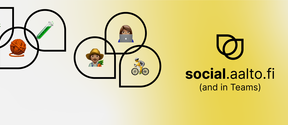New book: Learning Society — What is good for children is good for all
Published in Finnish “Hyvän oppimisen tilat”, 2022 by PS Kustannus Publishing House
How to create a learning society? How to have time and space for learning? How can current environments be utilized better and more versatile for learning? How are environments, learning and well-being linked. How to design and build a learning society?
This book awakens you to look at the world from new perspectives and expand the concepts of learning, environments, culture and society to new areas. The work shows how to promote learning so that the environment and pedagogy support each other.
The book is aimed at educators in early childhood education, primary and secondary schools as well as in colleges and universities. It offers new ideas for policymakers, community leaders, architects and other professional who deal with and are responsible for education.
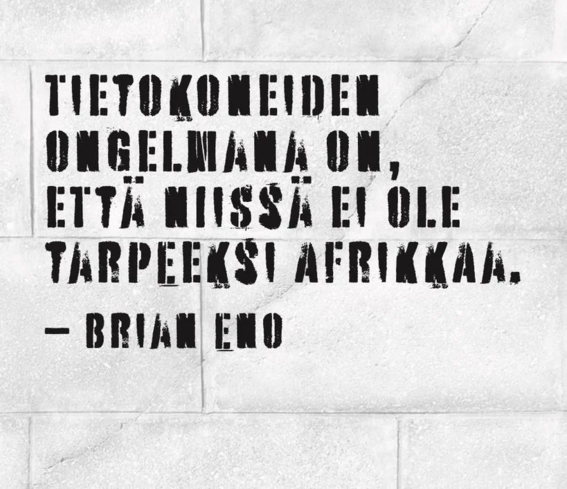
The first part starts by presenting the pedagogical and educational ideas where the current curriculums and practices of running kindergartens, schools and even universities come from. The aim is to open for the reader how different pedagogical practice are always reflections of the zeitgeist, the values of the time. In the history, however, there are individuals, scholars, thinkers and doers who have thought differently, people like Dewey, Freinet, Montessori, Steiner, Malaguzzi, Neill, Freire, Illich and Mitra. Many of these ideas are today visible in many schools, although a lot of things have been lost in translation and some of them are still considered to be “radical”.
The second part of the book gets into the practice, however, still emphasising that things are as they are because of earlier generations decisions. The educational landscape always reflects our values in the society, but sometime may have an impact on them. Several approaches to design good learning, with emphasis on wellbeing in different corners of the learning ecosystem of the society are presented. The aim is to empower educators to take active role in the design of teaching and learning. To show how educators can be the change makers who can have an impact on their and their students physical, socio-cultural and psychological environment. Educators and their students are encouraged to get out from their classroom — to explore forests, cities, galleries, museums and libraries. Why it is important to make learning connected to the surrounding world, and brining the surrounding world to the classroom is explained. Related to this the importance of communities in learning and how learning and civic life are intertwined are explained.
The third part is dedicated to the use of information and communication technologies (ICT) in teaching and learning. Because of growing role of computer-mediated communication and increasingly “datafied society” in general, everyone in the field of education should have a basic understanding of the phenomena. Similarly, as in the part one, in here, too, the history and roots of the ideas of using media and technology in education are explained. The role of latest technological development in education, including social media platforms, VR and AR and possible utopias and dystopias are discussed. Same time, it is argued that educators in general should have a strong voice when the ICT is designed for and entering to the field of education.
The fourth part gets back to the basics and big questions — what makes a human life meaningful? What is the role of art, music and spirituality in human life? The ultimate answer to the question what is the meaning of life is not given, but some aspects of it are presented. The book ends with an argument that a good learning can be more than the sum of good physical, socio-cultural and psychological environment. Good learning is a dynamic state, that is build every moment, all the time. This means that also the possible shortcomings in one element can be compensated with another. Still, the learning society is a “Heraclitus rive”: we cannot step into the same river twice, because the river, neither us is the same. Although, what we can do is to take careful steps to the rights direction to build a learning society that is based on the idea that what is good for children is good for all.
Authors
Professor Teemu Leinonen works at Aalto University School of Art, Design and Architecture (Finland) as the head of the learning environments research group. His research deals especially with digital learning environments and the design of digital teaching and learning tools. In recent years, Teemu has expanded his research also in the direction of architecture.
Mikko Mäkelä is the director of early childhood education in the city of Vantaa (Finland). Before his current position he has been the director of early childhood education in Järvenpää and the development manager of early childhood education in Helsinki. He has been responsible for projects related to learning environments, where schools have been developed from the perspectives of digitalization, physical movement of children and art education. In his work, he has been involved in the construction and renovation projects of several schools as a pedagogy expert.
Table of Content
PART 1
1 Towards Learning Society . . . 11
- The myth of never changing school . . . 13
- The mental state of good learning . . . 21
- A changing world – changing competences . . . 29
- Don't teach! . . . 37
2 What is good for children is good for us all . . . 45
- Human scale . . . 47
- The world of values and places . . . 55
- The inner world as a mirror of the environment . . . 65
PART 2
3 From pedagogy to architecture – from physicality to beauty . . . 75
- Let’s design a space . . . 77
- Form, content and beauty . . . 87
- Good spaces together . . . 95
- Ten tips for educators I . . . 103
4 The learning environment teaches: from the classroom to the forest, from the lecture hall to the market places . . . 109
- Yards, parks and pushes . . . 111
- Half a hectare forest . . . 121
- Common city, common village . . . 129
- Memory and information spaces in honour . . . 137
- Ten tips for educators II . . . 144
5 Who we study with matters . . . 149
- The human superpower: learning together . . . 151
- The power of stories . . . 157
- Common worlds . . . 165
- Languages and cultures touch . . . 173
- Ten tips for educators III . . . 182
PART 3
6 Modern times: a tramp in the world of learning machines and networks . . . 189
- Calculating machines and gadgets . . . 191
- Tools of the mind in the construction of knowledge . . . 201
- Media changes us . . . 209
- Ten tips for educators IV . . . 217
7 A brave new world of learning . . . 223
- Let's move to virtual reality . . . 225
- New layers to reality . . . 233
- What do we learn online? . . . 241
- The future must be done . . . 247
- Ten tips for educators V . . . 252
PART 4
8 Beyond everyday life . . . 259
- The longing for beauty . . . 261
- Sounds of the world . . . 271
- Don't worry, look from the pier to the horizon . . . 279
9 How to create Learning Society? . . . 285
- Nature capability . . . 287
- Evolve and improve while making . . . 293
- From learning environments to spaces for good learning . . . 299
- Epilogue: How did this book come about? . . . 304
- User manual of the book . . . 305
- Authors . . . 306
- References . . . 307
- Word index . . . 314
- Personal directory . . . 318
- Published:
- Updated:
Read more news
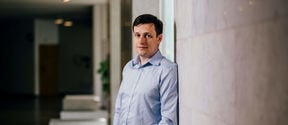
Viktar Asadchy receives Young Scientist Award
The Finnish Foundation for Technology Promotion awarded Assistant Professor Viktar Asadchy with the Young Scientist 2024 Award.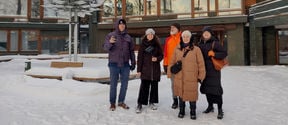
Preserving intangible cultural heritage through immersive XR experiences
Aalto University’s Department of Art and Media is coordinating a European wide project on preserving intangible cultural heritage and using it to address societal challenges with the help of immersive XR environments.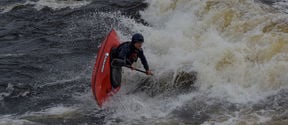
Joint action between business, sport and athletes will be more important in the future
This time, Aalto and Haaga-Helia's students with Urhea status met in a joint branding event